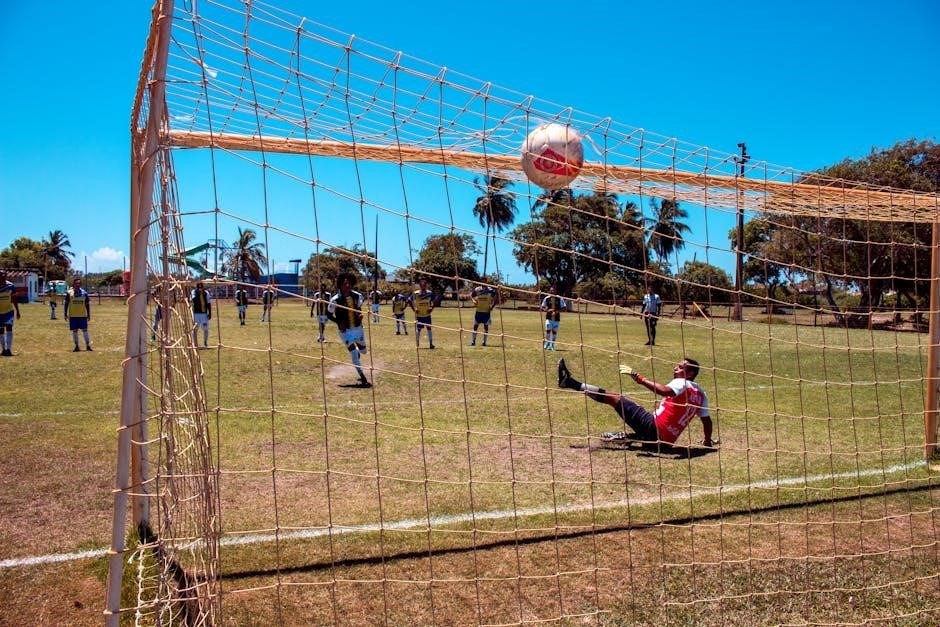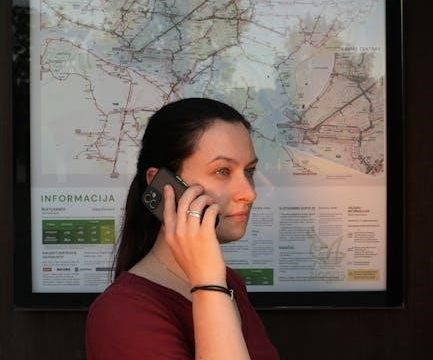Definition and Purpose of Cold War Cartoons
Cold War cartoons are defined as visual representations that convey political and social messages, often using satire and irony to critique the policies and ideologies of the time. The purpose of these cartoons is to provide a commentary on the events and issues of the Cold War era, such as the Cuban Missile Crisis and the Soviet Union’s influence in Europe. By analyzing these cartoons, students can gain a deeper understanding of the historical context and the perspectives of different nations and leaders. The cartoons can be used as a teaching tool to explore the complexities of the Cold War and its impact on society. The definition and purpose of Cold War cartoons are essential to understanding their significance and relevance in today’s world. The use of cartoons as a historical resource can provide a unique and engaging way to learn about the past. Cartoon analysis can be used in educational settings to promote critical thinking and historical understanding.
Importance of Analyzing Cold War Cartoons
Analyzing Cold War cartoons is crucial for understanding the historical context and cultural nuances of the era. By examining these cartoons, students can develop critical thinking skills and gain insight into the perspectives of different nations and leaders. The importance of analyzing Cold War cartoons lies in their ability to provide a unique window into the past, revealing the fears, anxieties, and ideologies of the time. Through cartoon analysis, students can learn to identify and interpret visual symbols, themes, and motifs, and develop a deeper understanding of the complex historical events that shaped the world. The analysis of Cold War cartoons can also help students to develop a more nuanced understanding of the role of propaganda and media in shaping public opinion. By studying these cartoons, students can gain a richer understanding of the Cold War era and its ongoing impact on modern society. Cartoon analysis can be a valuable tool for educators and historians.

Historical Context of Cold War Cartoons
Cold War cartoons emerged during post-World War II tensions between nations, reflecting societal fears and anxieties through visual media and propaganda techniques always online.
Cold War Era and Its Impact on Cartoons
The Cold War era had a significant impact on cartoons, with many cartoonists using their work to comment on the political tensions of the time. The era saw the rise of political cartoons as a major form of social commentary, with cartoonists using satire and irony to critique the policies and actions of governments. The impact of the Cold War on cartoons can be seen in the way that cartoonists used imagery and symbolism to convey their messages, often using simple yet powerful images to make complex points. The era also saw the emergence of new styles and techniques in cartooning, as artists sought to find new ways to express themselves and comment on the world around them. Overall, the Cold War era was a time of great creativity and innovation in cartooning, and its impact can still be seen today. Cartoons from this era continue to be studied and analyzed by historians and scholars.
Key Events and Leaders Depicted in Cartoons
Cartoons from the Cold War era often depicted key events and leaders of the time, such as the Cuban Missile Crisis and the leadership of Nikita Khrushchev and John F. Kennedy. These cartoons provided a unique perspective on the events and leaders of the time, often using humor and satire to comment on the politics of the era. The cartoons also reflected the fears and anxieties of the time, such as the threat of nuclear war and the spread of communism. Leaders like Josef Stalin and Winston Churchill were also frequently depicted in cartoons, often in a humorous or critical light. The events and leaders depicted in these cartoons continue to be studied and analyzed by historians and scholars today, providing a valuable insight into the politics and culture of the time. The use of cartoons to depict key events and leaders has become an important part of historical analysis and education.

Analysis of Cold War Cartoons
Analysis involves interpreting symbols and imagery in cartoons to understand historical context and perspectives on the Cold War era through online resources and pdf documents available.
Techniques Used in Cold War Cartoons
Cartoonists employed various techniques to convey their messages, including symbolism, caricature, and irony. These techniques allowed them to critique political leaders and policies without directly attacking them. The use of symbolism, for example, enabled cartoonists to represent complex ideas and concepts in a simple and easily understandable way. Caricature was also used to exaggerate the features of political leaders, making them more recognizable and memorable. Irony was used to highlight the contradictions and hypocrisies of political ideologies and policies. By analyzing these techniques, students can gain a deeper understanding of the historical context and the perspectives of different groups and individuals. Online resources, such as pdf documents and educational websites, provide access to a wide range of Cold War cartoons and analysis tools, making it easier for students to learn about and analyze these historical artifacts. Techniques used in Cold War cartoons are still studied today, providing valuable insights into the past.
Interpreting Symbols and Imagery in Cartoons
Interpreting symbols and imagery in Cold War cartoons requires a deep understanding of the historical context and cultural references of the time. Cartoonists used symbols and imagery to convey complex ideas and emotions, often relying on shared cultural knowledge to convey their message. For example, the use of a bear to represent the Soviet Union or an eagle to represent the United States was a common convention. By analyzing these symbols and images, students can gain insight into the attitudes and beliefs of different groups and individuals during the Cold War era. Online resources, such as pdf documents and educational websites, provide access to a wide range of Cold War cartoons and analysis tools, making it easier for students to learn about and interpret these historical artifacts. The interpretation of symbols and imagery is a crucial step in understanding the meaning and significance of Cold War cartoons, and is essential for a nuanced understanding of this period in history.

Teaching Resources for Cold War Cartoons
Teaching resources include online pdf documents and educational websites providing lesson plans and activities for analyzing Cold War cartoons and comics effectively in classrooms and educational settings always.
Lesson Plans and Activities for Analyzing Cartoons
Lesson plans and activities for analyzing Cold War cartoons involve guiding students to understand the historical context and visual symbolism used in the cartoons.
Teachers can use online resources such as loc.gov to access a wide range of Cold War cartoons and comics, and provide students with pdf documents containing questions and activities to analyze the cartoons.
These activities can include identifying key events and leaders depicted in the cartoons, analyzing the persuasive techniques used by the artists, and interpreting the symbols and imagery used to convey messages about the Cold War era.
By using these lesson plans and activities, teachers can help students develop critical thinking skills and a deeper understanding of the Cold War and its impact on society, and provide them with a comprehensive answer key to assess their knowledge and understanding of the topic.
Answer Key and Assessment Tools for Cartoon Analysis
The answer key and assessment tools for cartoon analysis are essential components of a comprehensive lesson plan, providing teachers with a clear guide to evaluate student understanding of Cold War cartoons.
Online resources such as pdf documents offer a range of assessment tools, including multiple-choice questions, short answer questions, and essay questions, to test students’ knowledge of key events and leaders depicted in the cartoons.
The answer key provides teachers with a detailed explanation of the correct answers, allowing them to assess student performance and provide feedback on their analysis of the cartoons.
By using these assessment tools, teachers can evaluate student understanding of the Cold War era and its impact on society, and identify areas where students need additional support or review, ultimately enhancing their critical thinking and analytical skills.

Effective assessment tools also enable teachers to refine their lesson plans and make adjustments to better meet the needs of their students, ensuring a more effective learning experience.






